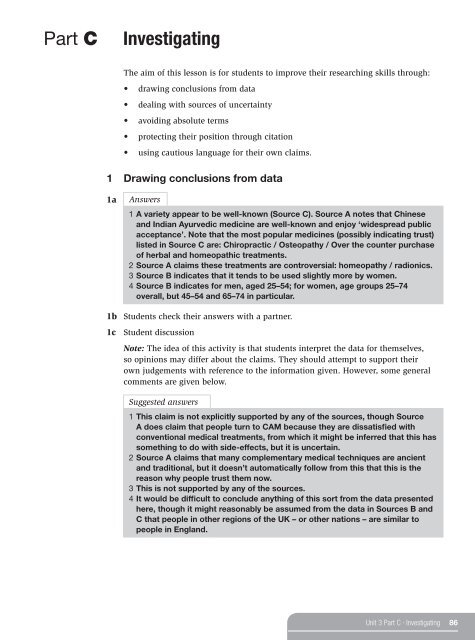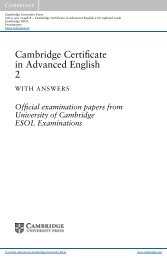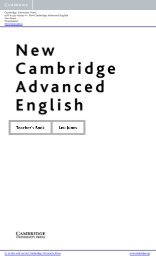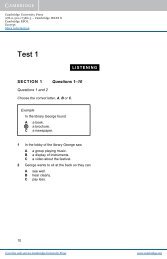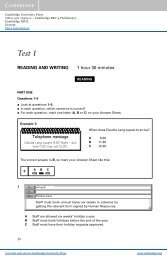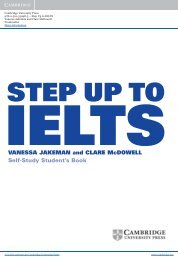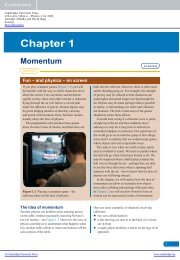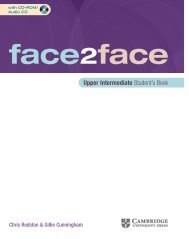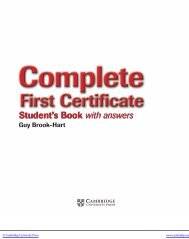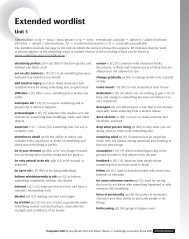Skills for Study Level 2 Teacher's Book - Cambridge University Press
Skills for Study Level 2 Teacher's Book - Cambridge University Press
Skills for Study Level 2 Teacher's Book - Cambridge University Press
Create successful ePaper yourself
Turn your PDF publications into a flip-book with our unique Google optimized e-Paper software.
Part CInvestigatingThe aim of this lesson is <strong>for</strong> students to improve their researching skills through:• drawing conclusions from data• dealing with sources of uncertainty• avoiding absolute terms• protecting their position through citation• using cautious language <strong>for</strong> their own claims.1 Drawing conclusions from data1aAnswers1 A variety appear to be well-known (Source C). Source A notes that Chineseand Indian Ayurvedic medicine are well-known and enjoy ‘widespread publicacceptance’. Note that the most popular medicines (possibly indicating trust)listed in Source C are: Chiropractic / Osteopathy / Over the counter purchaseof herbal and homeopathic treatments.2 Source A claims these treatments are controversial: homeopathy / radionics.3 Source B indicates that it tends to be used slightly more by women.4 Source B indicates <strong>for</strong> men, aged 25–54; <strong>for</strong> women, age groups 25–74overall, but 45–54 and 65–74 in particular.1b Students check their answers with a partner.1c Student discussionNote: The idea of this activity is that students interpret the data <strong>for</strong> themselves,so opinions may differ about the claims. They should attempt to support theirown judgements with reference to the in<strong>for</strong>mation given. However, some generalcomments are given below.Suggested answers1 This claim is not explicitly supported by any of the sources, though SourceA does claim that people turn to CAM because they are dissatisfied withconventional medical treatments, from which it might be inferred that this hassomething to do with side-effects, but it is uncertain.2 Source A claims that many complementary medical techniques are ancientand traditional, but it doesn’t automatically follow from this that this is thereason why people trust them now.3 This is not supported by any of the sources.4 It would be difficult to conclude anything of this sort from the data presentedhere, though it might reasonably be assumed from the data in Sources B andC that people in other regions of the UK – or other nations – are similar topeople in England.Unit 3 Part C ∙ Investigating 86


